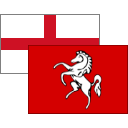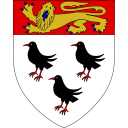There's no avoiding it, whatever your direction, so let's nip this elephant in the bud.

Anglican Church HQ and the reason the word 'archbishop' is only ever heard in a sentence with the word 'Canterbury' not too far behind.
Largely 12th-century following a fashionable, yet intimidating, Gothic reconstruction, the site dates to nearly 700 years earlier than that.
Notable tombs include Edward The Black Prince, last seen in Leeds, and King Henry IV, last seen with leprosy, allegedly, as well as many other medieval movers and shakers.
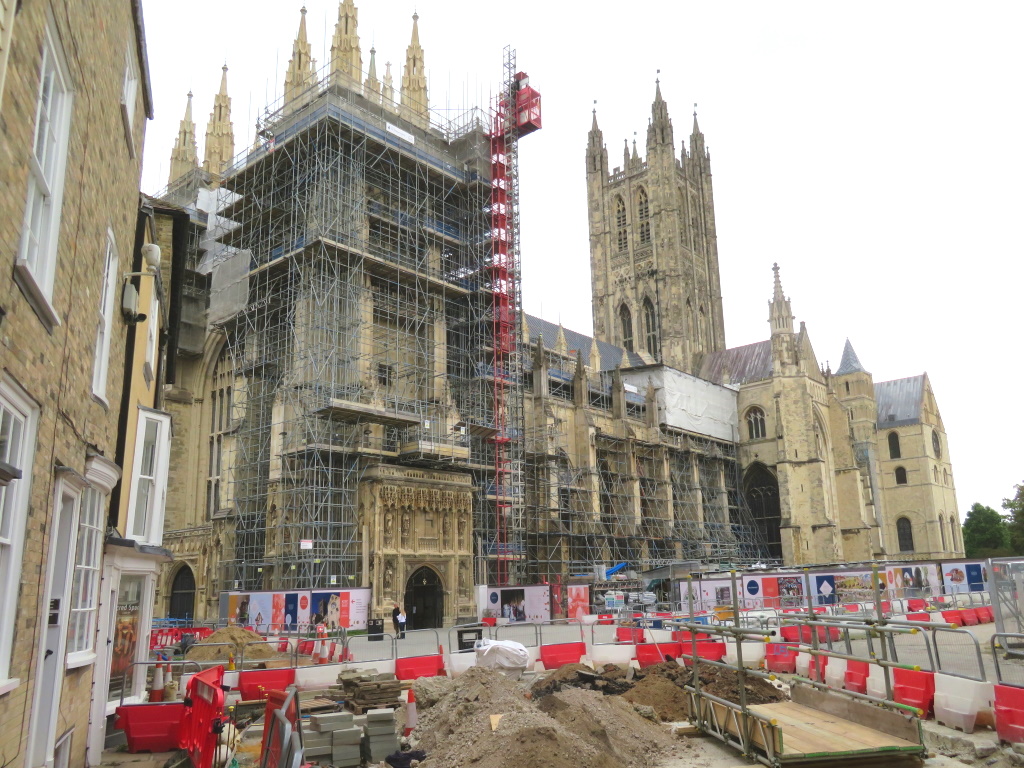
Still the destination for Christian pilgrims worldwide, of course it's a World Heritage Site and it'll all be nice when it's finished.
It's a gift-aided £10 a pop for access all areas but hey, when in, the Anglican equivalent of, Rome, eh?
When Geoffrey Chaucer sat down and inked his quill in 1387, little did he know his scribblings would still be under scrutiny over 600 years later.
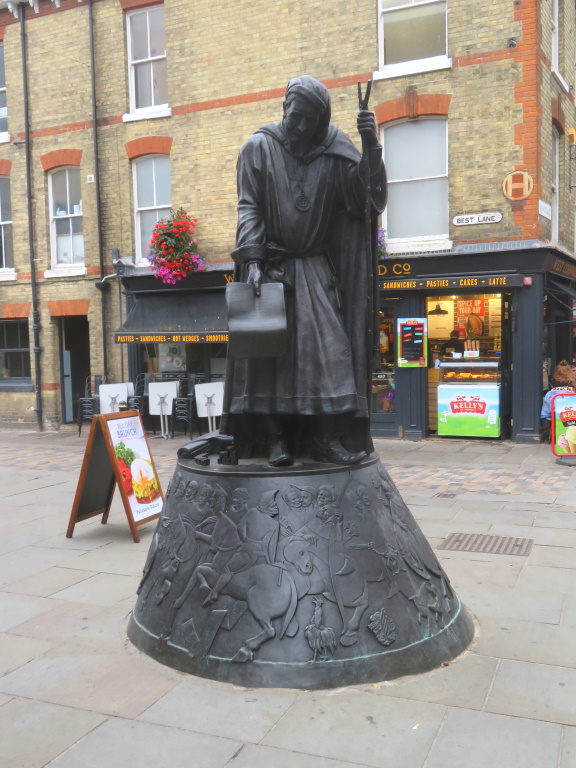
The Canterbury Tales, of course, a sprawling, proto-screenplay for a road movie, really, although it's no Midnight Run.
Scholarly types are undecided as to whether the work is actually complete, opening the door for a Canterbury Tales II unlike any Midnight Run II, most probably.
That's a shame because De Niro's in, he'll do anything, these days, although there's some work required to rewrite him out of retirement. The MacGuffin would have to be manufactured around "The Duke"'s, RIP, daughter or even granddaughter, say, who has an unpaid parking ticket or something and what's that? You're oot?
You can experience the pilgrims' japes, recreated in Canterbury's medieval passages thanks to some waxworks and becostumed students or at least you could have done in 2019.
Sadly, the decision to close this 30-year-old attraction was taken in April 2020, all down to tourist numbers tanking and that all down to you-know-what, no doubt.

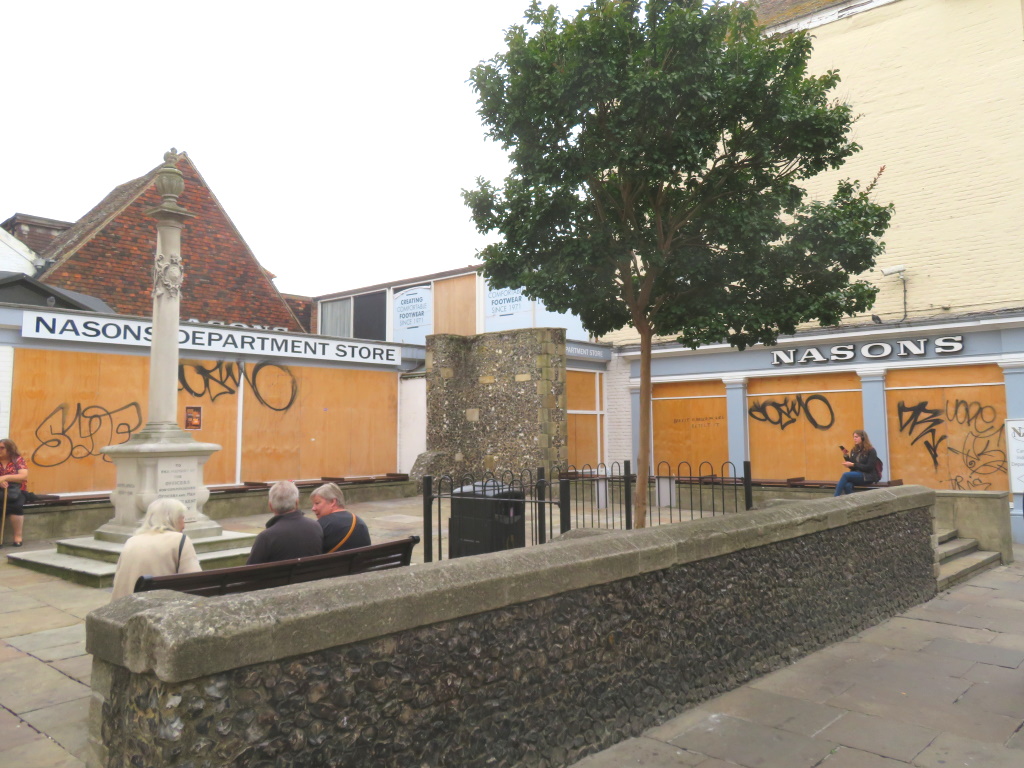
Another source cites the reason as the previous year's closure of the city's century-old and family-run department store.
It's unlikely that visitors were making a day of it by doubling up on this particular combo, however, and I'm free to other suggestions. No, this only caught the eye because of a font not seen since the '50s and the name is distantly familiar, relatively speaking.
They're not the only casualties, Canterbury Tails, seriously, has also gone the way.
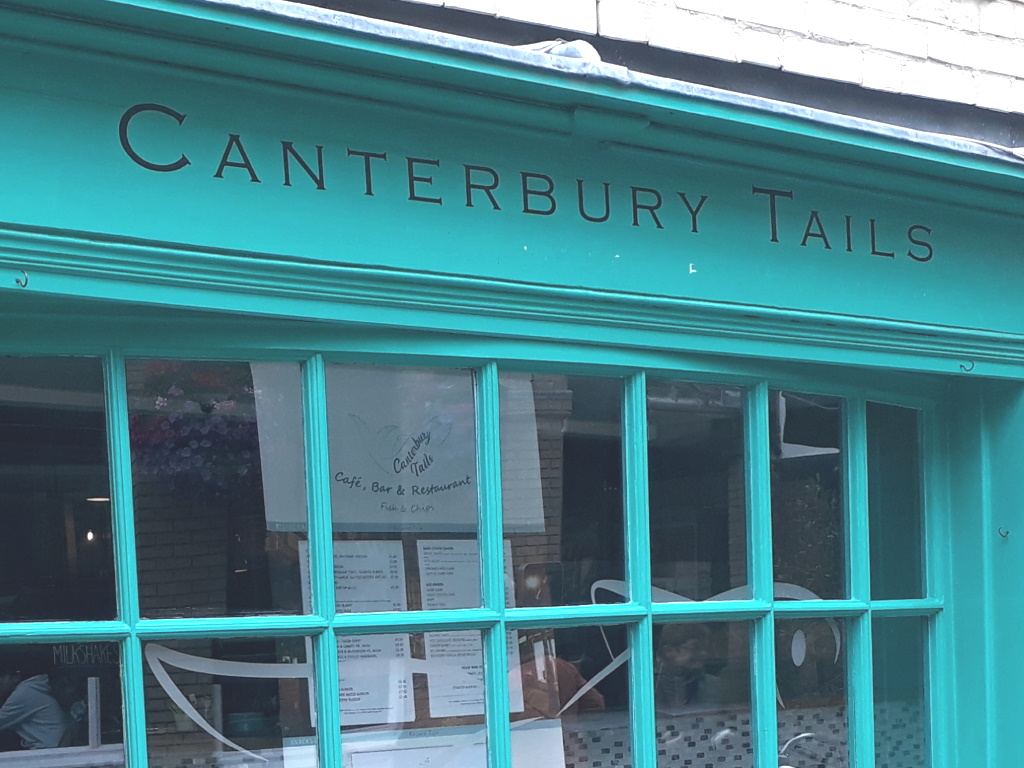
76% of reviewers may have liked Chaucer's book but that's less than the advising trippers who enjoyed tucking into their platefuls of fish & chips.
The name kind of worked for something finned but not so well for a pie or a battered sausage, say. No, it actually works much, much better for a local, pet-grooming service but the original bare-faced cod-cheek is preserved here for posterity.
Meanwhile, back at the cathedral, access is via an ornate gateway to the grounds and then one that's arguably even more ornater into the actual interior.


There's no sign inside of Thomas à Becket, however, famously murdered here and although everybody knows the name, no one knows when or even why?
The year 1170 was the year and Thomas Becket, one of your earlier archbishops, had a religious run-in with Henry II. That prompted the king to a verbal outburst that may have been misinterpreted, gravely misinterpreted.
Unbeknownst, perhaps, to Henry, four of his capos headed up from London and Becket's head ended up on the floor, brains and all, following the refusal of an offer he could and actually did refuse.
Henry VIII finished the job nearly 400 years later by smashing his shrine and crushing his bones and all because Becket was brought up to be a bit Catholically inclined.
Now, it's just a surviving bit of Becket's elbow that makes the odd personal and supernatural appearance, apparently, but the biggest mystery surrounds the addition of the 'à', which nobody seems to know much about, neither.
To lighten the mood a little, here's just some of the 1200 square metres of stained glass that graces the place.

Photography is forbidden further inside although that's a message that looks to have been lost in translation, as well, at least with most of today's visitors.
Despite being a Londoner, Chaucer is inextricably linked to Canterbury but there's another famous scribe whose provenance proves to be purer.
Local lad Christopher, 'Kit' to his friends, Marlowe, a forerunner to William Shakespeare and considered by many to be better if not quite so prolific. There's no sign of the man himself rather a statue and statuettes of characters from his best-known works.
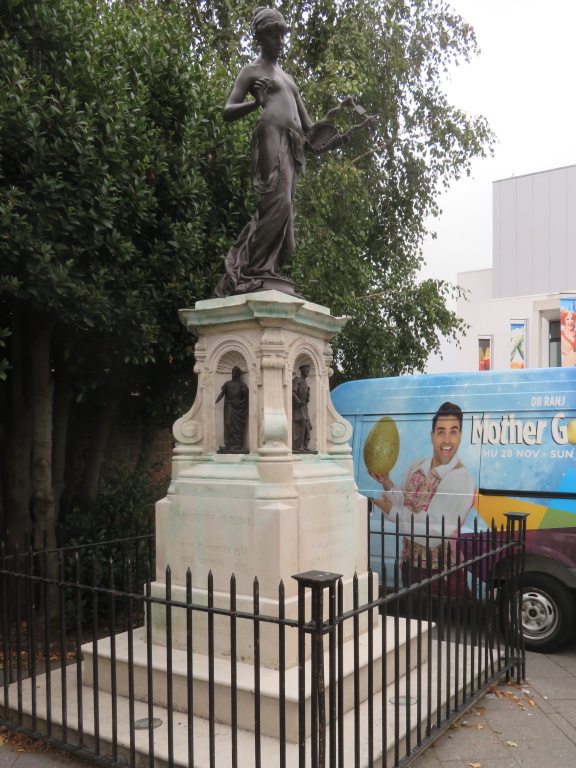
No mention, neither, of him being famously finished off in a bar room 'brawl', which amounts to more than a 'brawl', really. Was he murdered by the church, the state or even Sir Walter Raleigh?
His provocative outbursts on subjects such as the church, the state and homosexuality made him the Jeremy Clarkson of his day who himself has also gone and wrote some books.
It's not being suggested, by the way, it definitely isn't, that if you ever see Jeremy Clarkson in a bar, it definitely isn't.
The town's theatre takes Marlowe's name and, being brutally honest, is a modernist aberration amongst all that surrounds.

Not quite as high-brow as first imagined, Mamma Mia!, Dreamgirls etc. can be found alongside the occasional appearance by the RSC.
Also soon to be appearing in panto is Dr 'Doctor' Ranj and all this down, no doubt, to the medicine man's Faustian pact with ITV™, eh?
Meanwhile, back at the cathedral, there are stairs down to what is believed to be called a 'cloister'. Classic, fan-vaulted ceiling, for sure, and an enclosed garden made for a meditative milieu for medieval monks to muddle through the day.

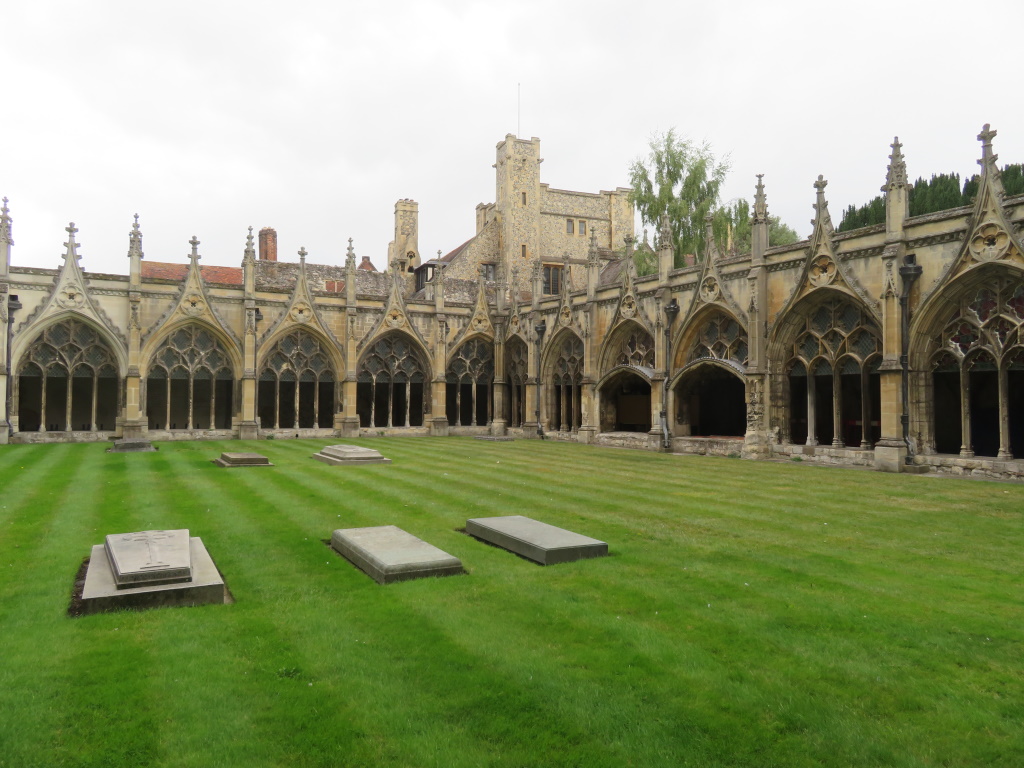
Some restoration has been required but it's nearly all Norman and some signage requests that he, and everyone else for that matter, don't carve their name into the crumbling plaster, by order of the Dean and Chapter, seriously.
Not unexpectedly, the high street is a right eye-catcher with the original buildings mostly repurposed for the modern day.

Lloyds Bank™ is well represented as is Caffè Nero™, accommodated in an Elizabethan structure advertising its date of birth as 1579!


That, incidentally, is nearly the same amount you can expect to pay in Canterbury for a Skinny Caramelatte, a Coconut Milk White Chocolate Mocha and a couple of almond biscotti, thanks very much.
What was once the original A2 down to Dover, the high street is ever-so-slightly spoiled by the lack of imagination that has gone into Fenwick™s department store.

Sorry Canterbury, this could just about be anywhere but only if 'anywhere' is London, Bracknell, Colchester, Kingston-upon-Thames, Newcastle, Tunbridge Wells or York where you'll also find a Fenwick™s.
Spoons have a tradition of naming their pubs based on the history of the town or the old building they invariably inhabit. The inevitable offering in a town of this size is called the Thomas Ingoldsby.
Amazingly, the Wetherspoon™s here isn't called The Thomas à Becket rather they've gone with another Thomas, Ingoldsby. At least he would be if that was his name but local humourist Richard Barham penned his inky quips under a nom de plume.
There are no awards for their nearly-out-of-date ale but the Director of Contrived Waterhole Naming gets a far-out (4/5) for, after some extensive research, an individual who is best known for the name of the Wetherspoon™s in Canterbury.
As for inside? It's a Wetherspoon™s man!
Would you believe there's an even older abbey here or at least what's left of it behind a tower that tempts you in from a distance.
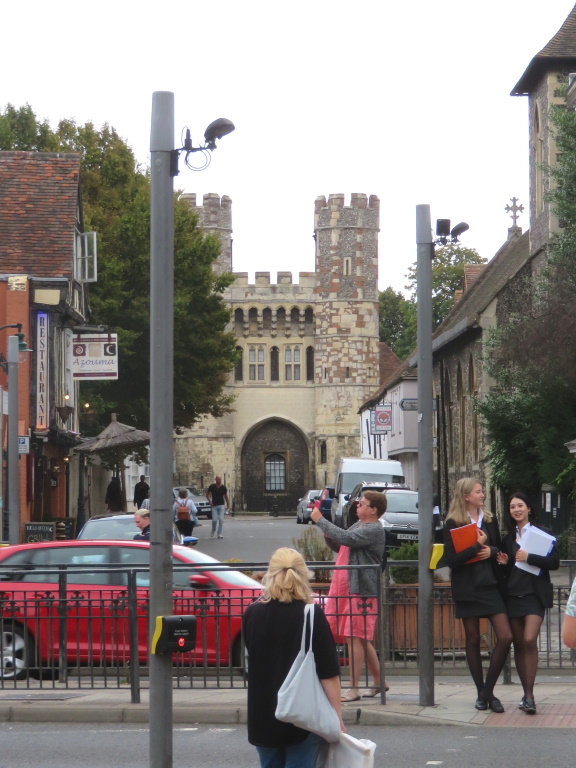
This hostelry is not far from there and the ruins of St. Augustine's go back to 597 AD but only if you can resist Another Distraction by way of the Spoons.
Meanwhile, back at the cathedral, it has been realised this is almost a city within a city with its own recreational areas and even an infirmary.


The last admissions, however, were all injured invaders called Norman, probably.
A couple of relaxing gardens, inexplicably not shown, and the occasional artsy installation are being enjoyed by dreamy, dispirited youth many of whom are sketching the scaffolding.

They might be with a school coach party from elsewhere or they might be boarders at The King's School, taking advantage of access all areas between lessons in double divinity.
King's is part of the same chain that runs Eton and yes, it's just like those hungry cartels who control high-street eating. Arguably the oldest continuously operating school in the world, the pick of their alumni is posh, perm-sporting, ex-cricketer David Gower, probably.
The oldest continuously operating school in the world? Just the oldest school in the world, then?
All significant settlements, all of them, ever, are next to water, normally, and even the cavemen had figured that was a good idea with evidence of some early axes unearthed.
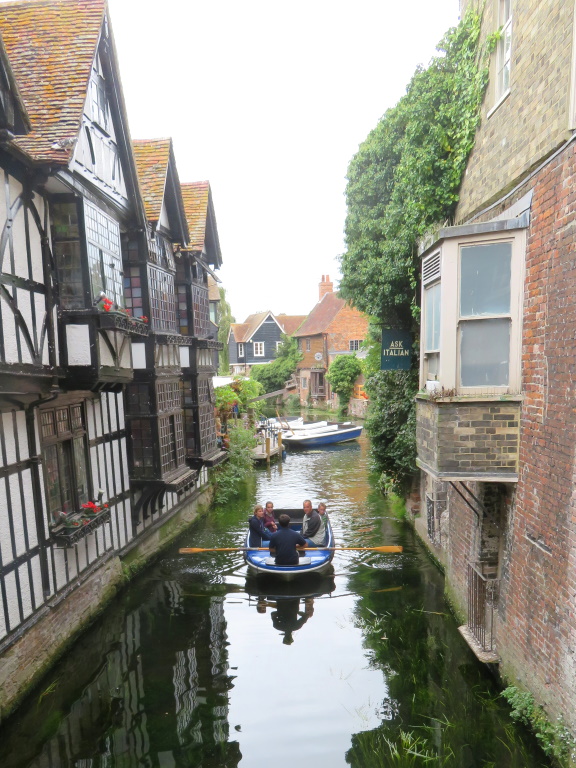
The water in question is the Great Stour, two of them, actually, one of which winds under the high street providing a Venetian-eye view of old Durovernum.
All significant settlements, all of them, ever, have a castle, normally, and even the Normans had figured that was a good idea with conclusive evidence of one near an ALDI™.
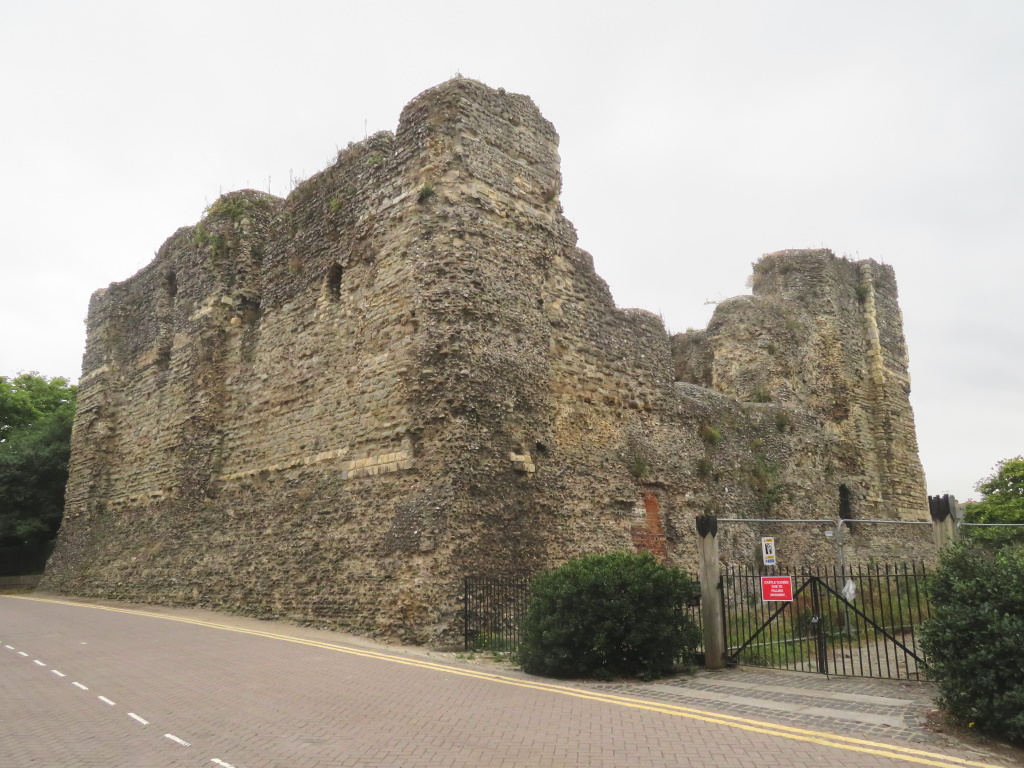
Not that the local authority will let you in, these days, unstable stonework would make for a hazardous history lesson and there's a much better one up in Northumberland, anyway.
Not that Northumberland can deliver on the medieval city front, the nearest thing to anything comparable is York, of course. They may have a minster and a maze of lanes laid out in the middle ages but nothing as fabled as the folkloric Thomas à Becket.
Still, if this is a little too far south for you, York does have a Fenwick™s.
